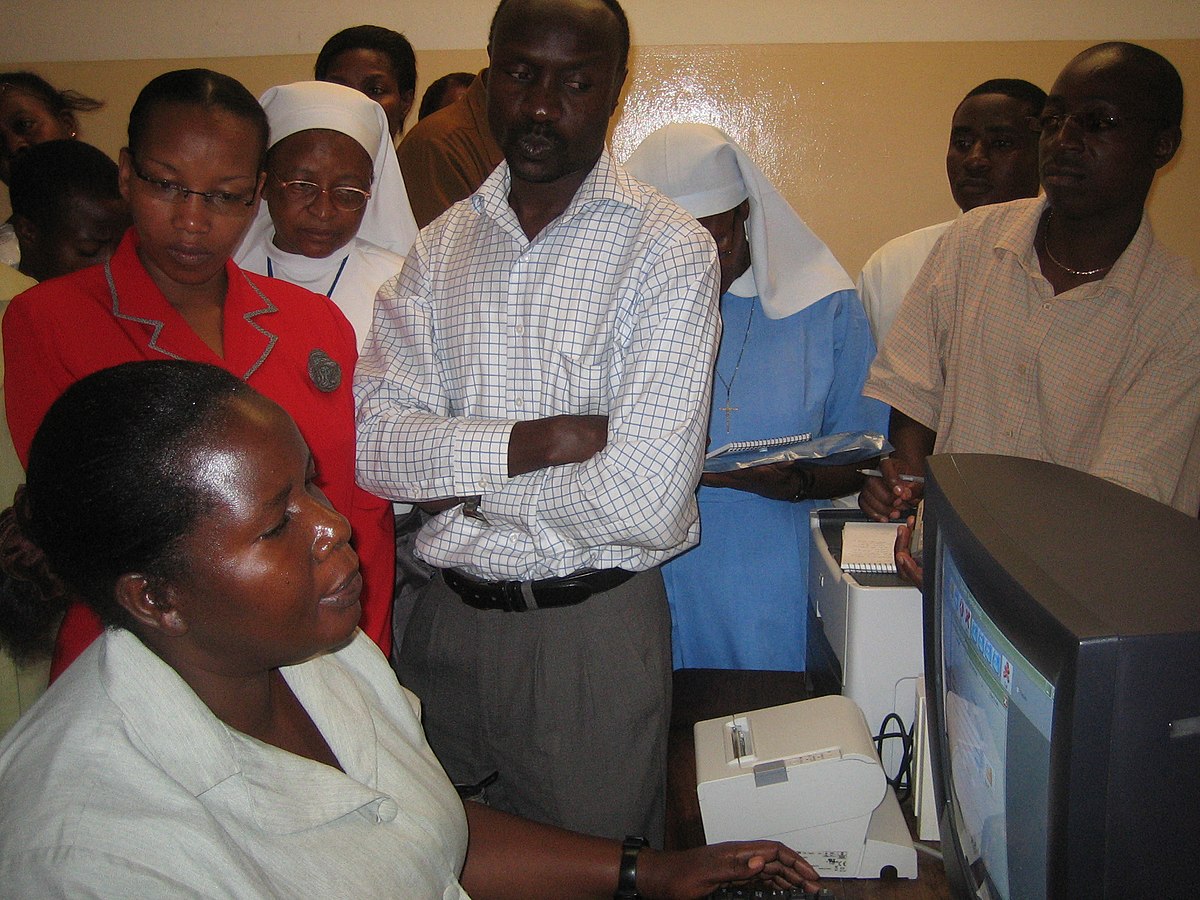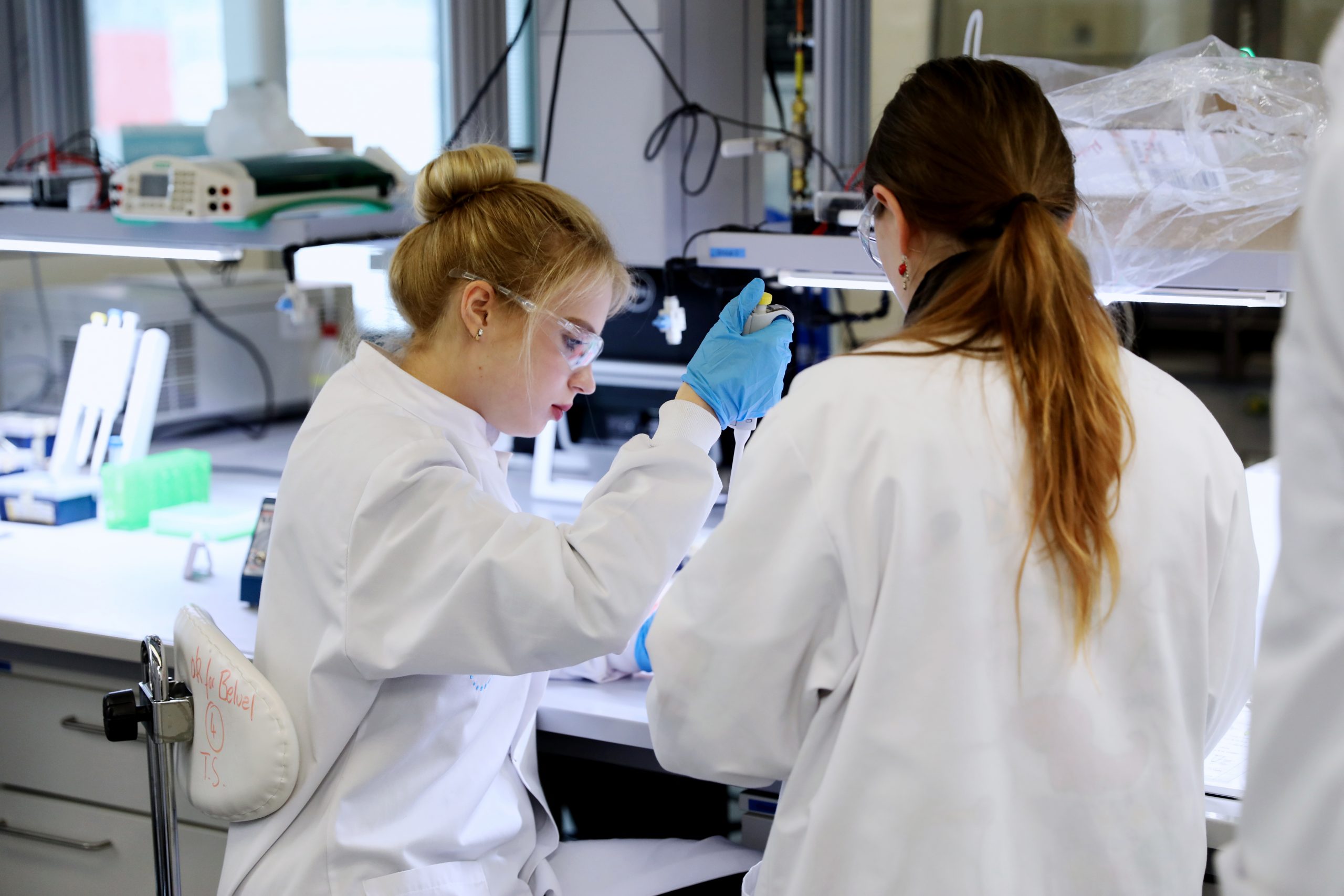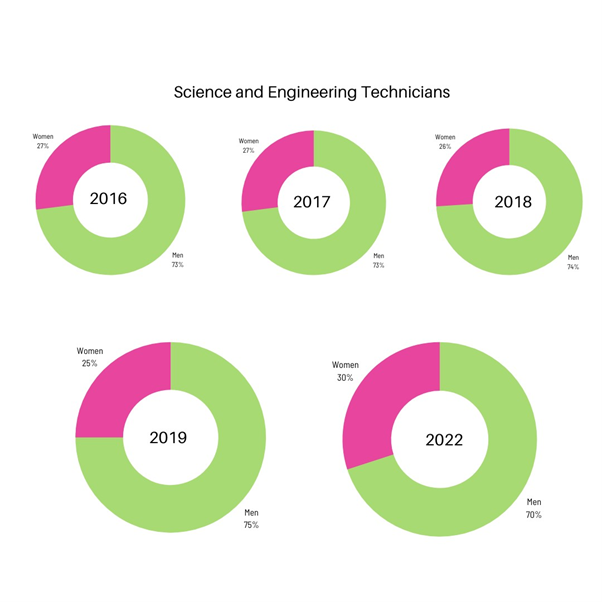41% of people employed as scientists and engineers are women

In 2022, there were almost 7.3 million female scientists and engineers in the EU, 310 500 more than in 2021, accounting for 41% of total employment in science and engineering. Women working as scientists and engineers were primarily employed in the service sector, comprising 46% of scientists and engineers in this sector, whereas in manufacturing, only 22% of those employed as scientists and engineers were women. Among the EU countries, the proportion of female scientists and engineers varied widely in 2022, ranging from 53% in Denmark, Lithuania (52%) and Bulgaria (51%) to 31% in Hungary, Finland (32%) and Germany (34%). Source dataset: hrst_st_nsecsex2 Scientists and engineers are a subcategory of the broad concept of people employed in science and technology. People are classified as working in science and technology if they work in occupations that could be involved in the systematic generation, advancement, diffusion, and application of scientific and technological knowledge, independently of the level of studies. This category also includes other occupations like technicians or associated professionals. The highest shares of women employed in science and technology occupations in 2022, in regions by level 1 of the Nomenclature of territorial units for statistics (NUTS1) were observed in Lithuania (a single region at NUTS 1 level) (64.1%), in the French region of Corse (63.9%) and in Latvia (also a single region at NUTS 1 level) (62.7%). At the other end of the scale, the regions with the smallest proportions of females employed in science and technology were recorded in the Italian region of Nord-Ovest (45.3%), Malta (45.8%) and the Italian region of Sud (46.1%). Source dataset: hrst_st_rsex This news item marks the International Day of Women and Girls in Science, celebrated on 11 February.
Eurostat is the statistical office of the European Union. Its mission is to provide high quality statistics and data on Europe.
Workplace challenges faced by Women in STEM.

Science Must Be for Everyone

Is There Still a STEM Gender Gap in 2023? - KnowHow

How come Bulgaria and Romania lead “women in tech” rankings?

Women in the workforce - Wikipedia

EUROsociAL+ contributes to improving access to training in STEM subjects ( Science, Technology, Engineering and Mathematics) for Uruguayan women and girls - Eurosocial

Employment of diplomaed young people in Science & Technology: Luxembourg ranks 1st in the EU - researchluxembourg

More women join science and engineering ranks - Products Eurostat News - Eurostat

Women Making Gains in STEM Occupations but Still Underrepresented

Women In STEM Statistics: Progress and Challenges - Stem Women

Women In STEM Statistics: Progress and Challenges - Stem Women

:max_bytes(150000):strip_icc()/shutterstock_editorial_9974160d_huge-2000-5ae74c00e00e4d6a9a332242a26c8839.jpg)




